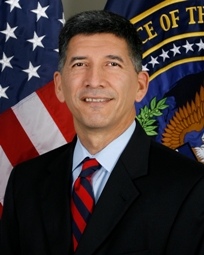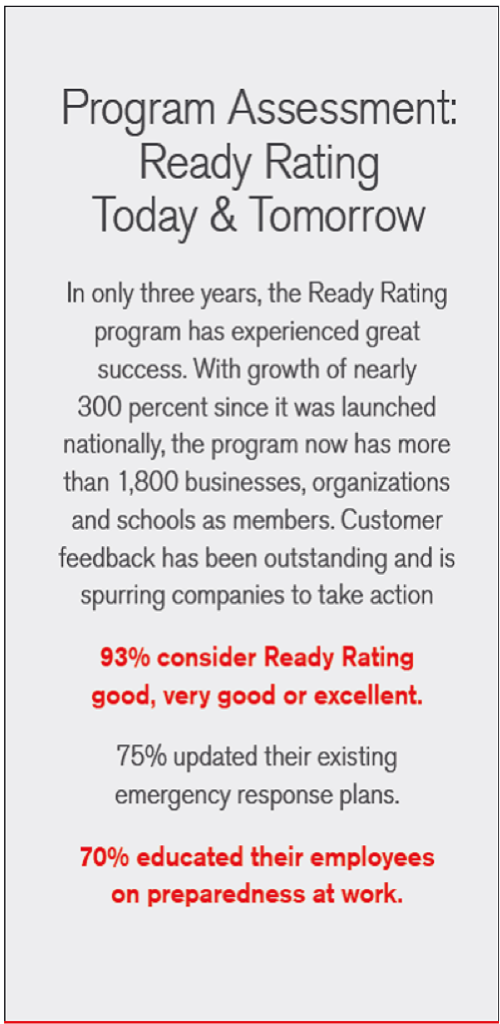Dec. 12: The National Security Supply Chain: Reducing the Vulnerabilities
Join the Government Technology & Services Coalition (GTSC) for a program featuring an overview of acquisition, technology and innovation in the intelligence community to both assure we have the most advanced protections in place to mitigate our vulnerabilities, and the most recent tools and information on how to protect intellectual property, prevent insider threats and understand supply chain considerations in the government contracting environment. Keynote Frank Montoya, Jr., National Counterintelligence Executive, Office of the Director of National Intelligence will keynote with a preview of the 2013 Economic Espionage Report (EER).
- Kristina Tanasichuk, CEO, GTSC
- Elena Kim-Mitchell, Director, Private Sector Outreach, ODNI
12:10 PM ODNI Movie
12:30 PM – 1:30 PMKeynote Luncheon:Preview of the 2013 Economic Espionage Report
Frank Montoya, Jr., Counterintelligence Executive, ONCIX
1:30 PM – 2:00 PM CERT & Insider Threat
Randy Trzeciak Senior Member of the Technical Staff, Software Engineering Institute’s (SEI), CERT Program, Carnegie Mellon University
2:00 PM – 3:00 PM Best Practices on Insider Threats & Supply Chain Security
- Joan McCarroll, Director, Systems Engineering and Integration (SE&I) Center of Excellence
- Kathy Mills, Corporate Security Officer/Security Director, CENTRA Technology, Inc.
3:00PM – 3:30PM Cyber Threats & Vulnerabilities to Small & Mid-Sized Companies
3:30 PM – 4:15 PM Acquisition, Technology & Innovation
Dr. David A. Honey, Ph.D., Director for Science & Technology, Assistant Deputy Director of National Intelligence for Science & Technology, ODNI
4:15PM – 5:00 PM What Can Business Do?
- DHS Business Continuity tool
- FBI Resources
 Keynote: Dr. David A. Honey, Director for Science & Technology, Assistant Deputy Director of National Intelligence for Science & Technology, ODNI
Keynote: Dr. David A. Honey, Director for Science & Technology, Assistant Deputy Director of National Intelligence for Science & Technology, ODNI Keynote: Frank Montoya, Jr., Counterintelligence Executive, Office of the National Counterintelligence Executive (ONCIX)
Keynote: Frank Montoya, Jr., Counterintelligence Executive, Office of the National Counterintelligence Executive (ONCIX)
Frank Montoya, Jr. began his career as an FBI special agent in May 1991 and reported to the San Antonio Field Office, where he worked violent crime and fugitive investigations. He established and led activities of the division’s fugitive task force. Montoya also worked temporarily in the Oklahoma City Field Office to assist in the Alfred P. Murrah Federal Building bombing investigation. In April 2000, Montoya was promoted and worked at FBI Headquarters. He oversaw national security investigations and operations. During this time, he assisted in the Robert Hanssen investigation. Montoya transferred to the Milwaukee Field Office in November 2002. He served as supervisor and oversaw the counterintelligence squad and several national security investigations. Montoya returned to FBI Headquarters in December 2005, was promoted to unit chief in the Counterintelligence Division, and participated in the establishment of the National Cyber Investigations Joint Task Force. He moved to the West Coast in July 2007 and worked in the San Francisco Field Office as assistant special agent in charge in the counterintelligence branch.
 Joan McCarroll, Director, Systems Engineering and Integration (SE&I) Center of Excellence
Joan McCarroll, Director, Systems Engineering and Integration (SE&I) Center of Excellence
In her role as SE&I COE Director, Joan is responsible for establishing and promoting TASC’s best practices and processes in SE&I, program protection and cybersecurity including insider threat analysis. In her current role, Joan identifies Leading Practices in SE and deploys them across the company resulting in innovative solutions for our customers. In the area of program protection, Joan has expertise in both external and internal threat assessment and protection. Since joining TASC in 1990, Joan has performed and led end-to-end technical efforts in support of operationally deployed systems, systems under development, and future system architecture studies. She has held senior program management positions supporting the intelligence community in secure communications and SIGINT. Joan received her BSEE from Drexel University and her MS in Systems Analysis and Management from George Washington University. She has also attended Executive education courses at Darden and Strategic Marketing at the University of Chicago.
 Kathy Mills, Corporate Security Officer/Security Director, CENTRA Technology, Inc.
Kathy Mills, Corporate Security Officer/Security Director, CENTRA Technology, Inc.
Kathy joined CENTRA Technology, in November 2008 as the Corporate Security Officer/Security Director. She is responsible for all aspects of CENTRA’s Security operations, including personnel security, program security, physical security, and Information security, at both CENTRA’s Arlington and Burlington locations. Kathy has over twenty years experience in security including management of day-to-day operational security, personnel management, administration, and maintaining all aspects of a security program under the National Industrial Security Program.
 Randy Trzeciak Senior Member of the Technical Staff, Software Engineering Institute’s (SEI), CERT, Carnegie Mellon University
Randy Trzeciak Senior Member of the Technical Staff, Software Engineering Institute’s (SEI), CERT, Carnegie Mellon University
Randy Trzeciak is currently a Senior Member of the technical staff for the Software Engineering Institute’s (SEI) CERT Program. Mr. Trzeciak is a member of a team in CERT focusing on insider threat research. The studies analyze the physical and online behavior of malicious insiders prior to and during network compromises. Other insider threat research uses system dynamics modeling for risk analysis of the impacts of policy decisions, technical security measures, psychological issues, and organizational culture on insider threat. Mr. Trzeciak also is an adjunct professor in Carnegie Mellon’s H. John Heinz School of Public Policy and Management. Prior to his current role in the CERT Program, Mr. Trzeciak managed the Management Information Systems (MIS) team in the Information Technology Department at the SEI. Under his direction, the MIS team developed and supported numerous mission-critical, large-scale, relational database management systems.




 The Challenge
The Challenge

 Information Week, a leading IT industry news source, estimates $26.5 billion in revenue is lost annually due to network and system interruptions. Despite the potential for depleted earnings, angry customers, tarnished reputations, and lost data, over 50% of businesses don’t have an IT disaster recovery plan.
Information Week, a leading IT industry news source, estimates $26.5 billion in revenue is lost annually due to network and system interruptions. Despite the potential for depleted earnings, angry customers, tarnished reputations, and lost data, over 50% of businesses don’t have an IT disaster recovery plan.
